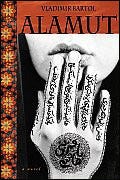Alamut is based on a tale from The Travels of Marco Polo about a Middle Eastern warlord who converted young men into fearless assassins by tricking them into believing he could transport them to Paradise. Hashish and a hidden garden full of beautiful, virginal women were the secrets of his success. The tale of the bogus Paradise is almost certainly fable rather than fact, but its central figure, Hasan Sabbah, was a real person. In 1090, he acquired the impregnable fortress of Alamut and used it as a base to revolt against the Seljuk Turks who had invaded Persia and installed themselves as rulers. It may have been one of Hasan's men who assassinated the vizier Nizam al-Mulk in 1092; political assassinations were not uncommon in eleventh century Persia.
Vladimir Bartol, a Slovenian, wrote this novel in 1938 during the rise of the totalitarian dictators Hitler, Mussolini and Stalin. Though his story cannot be reduced to allegory, he clearly intended it as a caution against the use of deception and force to gain power. It is a novel of ideas rather than character. The dialogue tends to be stiff, the characters stereotyped. But an eerie correspondence has arisen between the novel's premise and events of recent decades, as stateless organizations led by charismatic and ruthless individuals adopt suicide as a weapon. Readers of Alamut may note that the young men who flocked to Hasan's fortress were initially attracted not because of the Paradise fantasy, but because of their lust for revenge against an unjust ruler. (1939, 379 pages)




